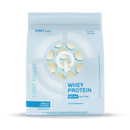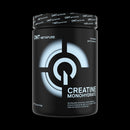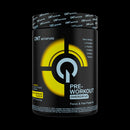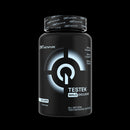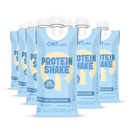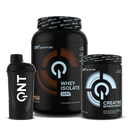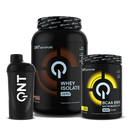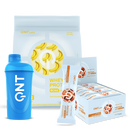Table of Contents
1. How to Start Weightlifting Effectively ?
Starting weightlifting is an exciting adventure that marks the beginning of a journey towards something better. To ensure that this journey is both effective and rewarding, here are some essential tips for beginners in weightlifting.
1. Assess your current physical condition .
Before lifting any weights, it's crucial to assess your current physical condition. This may involve consulting with a healthcare professional to ensure you're ready to start a weightlifting program. Knowing your starting point will allow you to measure your progress significantly.
2. Establish realistic and measurable goals .
One of the most motivating aspects of weightlifting is seeing the results of your efforts. To do this, set clear, realistic, and measurable goals. What do you want to achieve? Increased strength? Better muscle definition? Weight loss? Ensure that your goals are specific, measurable, attainable, relevant, and time-bound (SMART method). This way, you can stay focused and motivated.
3. Start with the basics .
As a beginner, it's essential to focus on the fundamentals. Learn to perform basic exercises correctly that engage multiple muscle groups, such as squats, deadlifts, chest presses, and pull-ups. These compound movements are extremely effective in building a solid foundation of strength and muscle. However, don't try to progress too quickly. You can always push further when a workout feels too easy, but if it's too hard, you may not be able to step back, and pain or injury may linger for several days.
4. Prioritize technique over weight .
The quality of execution is far more important than the quantity of weight lifted. Poor technique can not only hinder your progress but also put you at risk of injury. Take the time to learn the correct form for each exercise, even if it means lifting lighter weights initially.
5. Plan your workouts .
Consistency is key to success in weightlifting. Create a workout program that incorporates rest days to allow your body to recover. A good starting point could be to train 3 to 4 times a week, alternating between workout days and rest days.
6. Be patient and consistent .
Results in weightlifting take time and perseverance. Don't hesitate to persevere even if you don't see instant results. Consistency in your workouts and nutrition will lead you toward your goals.
7. Don't forget about nutrition .
Weightlifting is not just about what happens in the gym. A balanced diet tailored to your goals is crucial. Consume enough protein to promote muscle recovery and consider consulting with a nutritionist to develop a personalized meal plan.
By following these tips, you will lay the solid foundations of an effective weightlifting program. Remember, the journey to your ideal fitness level is a marathon, not a sprint. Enjoy every step of the process and celebrate the small victories along the way to achieving your goals.
2. WHAT ARE THE BASIC EXERCISES FOR A WEIGHTLIFTING PROGRAM ?
To build an effective weightlifting program, it's essential to integrate basic exercises that target major muscle groups. These exercises, often referred to as compound exercises, are the cornerstone of any successful weightlifting program due to their effectiveness in building strength and muscle mass.
The importance of compound exercises .
Compound exercises are movements that engage multiple muscle groups at once. Unlike isolation exercises that target a specific muscle, compounds provide a more comprehensive workout and allow for lifting heavier loads. This further stimulates the production of anabolic hormones, essential for muscle growth. Additionally, by working multiple muscles simultaneously, you optimize your time spent in the gym, making your sessions more efficient.
Examples of exercises for each muscle group .
Here is a selection of classic compound exercises that should form the core of your weightlifting program :
For the upper body :
- Chest: The bench press is the king of exercises for developing the chest. It can be performed with a barbell or dumbbells, on a flat, inclined, or declined bench to target different aspects of the chest.
- Back: Deadlifts and pull-ups are crucial for a strong and wide back. Deadlifts engage the entire back, while pull-ups target more the upper back and lats.
- Shoulders: The shoulder press, performed standing or seated, is excellent for building strong and well-rounded shoulders.
For the lower body :
- Legs: The squat is the quintessential leg exercise. It works the entire lower body muscles, including the quadriceps, hamstrings, and glutes. Variations such as the front squat can also be used to vary the training.
- Hamstrings and Glutes: The Romanian deadlift is ideal for targeting the back of the legs and the glutes, complementing the work done by squats.
Integration into your program .
For beginners, starting with 2 to 3 sets of 15 to 20 repetitions for each exercise is a good starting point. As you progress, you can increase the weight and vary the number of sets and repetitions to continue stimulating muscle growth. It is crucial to focus on form and technique before increasing weights. Proper execution not only ensures better muscle stimulation but also reduces the risk of injury. By integrating these basic exercises into your weightlifting program, you will lay the necessary foundations to build strength and muscle mass effectively. Don't forget to complement these compound movements with isolation exercises to target specific muscles and refine your training.
3. HOW TO PLAN YOUR WEIGHTLIFTING PROGRAM ?
Planning a weightlifting program is crucial to ensure consistent progress and avoid plateaus. The frequency of workouts and how you divide your sessions play a major role in the effectiveness of your program. Here's how to approach these aspects to maximize your results.
Training frequency per week .
The frequency at which you train each week will depend on several factors, including your goals, your level of experience, and most importantly, your ability to recover. Beginners can see significant progress with just 3 to 4 sessions per week, while more advanced athletes may require 5 to 6 sessions to sufficiently stimulate their muscles.
- For beginners: 3 sessions per week with full-body workouts, targeting each muscle group in each session.
- For intermediates: 4 to 5 sessions per week, considering an upper/lower split or a specific program for each muscle group.
- For advanced: 5 to 6 sessions, with more detailed splits to target muscles even more precisely.
Session Division: Full Body, Split, Upper/Lower .
Choosing how to divide your sessions is essential to ensure adequate recovery and consistent progression.
- Full Body: Ideal for beginners or those who prefer less frequent sessions. Each session targets the entire body, allowing for a high frequency of muscle stimulation even with only 3 sessions per week.
- Split Upper/Lower: A popular option for those training 4 days a week. This division allows for focusing on the upper body during two sessions and the lower body during the other two. It provides a good balance between training frequency and recovery.
- Specific Splits: For more advanced athletes, splitting the program into sessions targeting 1 to 2 muscle groups per day can allow for higher intensity and volume of training for each muscle group. This typically requires training 5 to 6 days a week.
Tips for planning .
- Balance and Variety: Ensure that your program is balanced, targeting all major muscle groups with a variety of exercises to stimulate growth from all angles.
- Recovery: Plan rest days between sessions to allow for optimal muscle recovery. Muscle growth occurs outside of the gym, while you rest.
- Progression: Incorporate a progression principle into your program. Gradually increase the load, volume (number of sets and repetitions), or intensity of exercises to continue challenging your muscles and promoting growth.
- Flexibility: Be ready to adjust your program based on your progression, recovery, and any changes in your schedule or personal life.
By following these guidelines to plan your weightlifting program, you will be well positioned to achieve your fitness goals. The key is to stay committed, listen to your body, and be prepared to adjust your routine as needed to continue making progress.
4. WHAT IS THE IMPORTANCE OF NUTRITION IN A WEIGHTLIFTING PROGRAM ?
Nutrition plays a fundamental role in the success of a weightlifting program. It is as crucial as the training itself for building muscle, recovery, and enhancing performance. Here's how to approach nutrition to support your weightlifting goals.
The basics of a diet suitable for muscle gain .
- Consume enough calories: To build muscle, your body needs a calorie surplus. This means consuming more calories than you burn throughout the day. Use an online calorie calculator to estimate your needs, then add a moderate surplus of 250 to 500 calories to promote muscle growth.
- Prioritize protein: Proteins are the building blocks of muscles. Make sure to include a source of high-quality protein in every meal. Recommendations vary, but aiming for around 1.6 to 2.2 grams of protein per kilogram of body weight per day is a good starting point for most people.
- Do not neglect carbohydrates: Carbohydrates are the primary source of energy for intense workouts. They also contribute to muscle recovery by replenishing glycogen stores. Opt for complex carbohydrate sources such as whole grains, vegetables, and fruits.
- Include healthy fats: Fats play a crucial role in hormone production, including anabolic hormones like testosterone. Include sources of healthy fats such as avocados, nuts, seeds, and vegetable oils.
- Hydration: Water plays a crucial role in multiple body functions, including transporting nutrients to the muscles. Drink enough water throughout the day, especially before, during, and after workouts.
Recommended dietary supplements .
While most of your nutritional needs should be met through a balanced diet, some supplements can be helpful :
- Protein powder: Convenient for reaching your daily protein goals, especially if you struggle to consume enough protein through diet alone.
- Creatine: One of the most studied supplements, creatine can improve strength, power, and muscle performance, as well as promote recovery.
- BCAA (Branched-Chain Amino Acids): Can support muscle recovery and reduce fatigue during workouts.
- Omega-3: Omega-3 fatty acids can help reduce inflammation and support heart and joint health, which is beneficial for active individuals.
- Vitamins and minerals: A multivitamin can help cover micronutrient needs, especially if your diet is limited in diversity.
Nutrition is an essential component of any weightlifting program. By following these basic principles and considering the addition of recommended dietary supplements, you can effectively support your training and maximize muscle gains.
5. HOW TO AVOID INJURIES DURING WEIGHTLIFTING ?
Injury prevention is essential to ensure consistent and sustainable progress in weightlifting. Injuries not only delay your progress but can also demoralize you and keep you away from the gym for extended periods. Here's how to reduce the risk of injuries.
Warm-up and cool-down are important .
- Warm-up: Starting each session with a warm-up helps prepare your body for physical exertion. An effective warm-up increases body temperature, improves blood circulation to the muscles, and prepares your joints for exercise. This may include 5 to 10 minutes of light cardio (brisk walking, cycling) followed by a few sets of warm-up specific to the movements you will perform.
- Cool-down: After your session, take the time to gradually lower your heart rate with low-intensity activity and finish with stretching. This helps remove metabolic waste accumulated in the muscles, reduces the risk of soreness, and improves flexibility.
Correct exercise execution techniques .
- Learn proper form: Before increasing the weight, make sure to master the technique of each exercise. Poor form can not only reduce the effectiveness of the exercise but also significantly increase the risk of injury. Do not hesitate to seek the assistance of a certified coach to learn and correct your technique.
- Use appropriate weight: Start with weights that you can control for about fifteen repetitions with good form. Gradually increasing the load allows you to strengthen your muscles and joints without overloading them.
- Listen to your body: Be attentive to the signals it sends you. Pain is a revealing sign of potential problems. If an exercise causes you pain, stop and assess the cause. It could be due to poor form, overloading, or an impending injury.
- Vary your workouts: Repeating the same movements with the same loads can lead to overuse injuries. Varying your exercises, intensity, and training volume can help prevent this type of injury.
- Muscle strengthening and mobility: Incorporate strengthening exercises for often neglected areas, such as stabilizer muscles, and work on your mobility and flexibility. This can help maintain muscle balance and prevent imbalances that often lead to injuries.
By following these tips, you can significantly reduce the risk of injury and ensure that your weightlifting remains safe, effective, and enjoyable in the long term.
6. WHAT IS THE IMPACT OF REST AND RECOVERY ?
Rest and recovery are essential components of an effective weightlifting program. They not only help prevent injuries but also play a crucial role in progression and performance improvement. Here's how sleep and managing rest days influence muscle recovery and the effectiveness of your training.
The role of sleep in muscle recovery .
- Recovery and Growth: During sleep, your body regenerates and repairs muscle tissues damaged during training. It's also during this period that the body produces the majority of its growth hormones, essential for muscle recovery and growth.
- Quality and Duration: The quality and duration of sleep are equally important. Adults typically need 7 to 9 hours of sleep per night for optimal recovery. Make sure to meet these needs and adopt a regular sleep routine to improve the quality of your rest.
- Impact on Performance: Lack of sleep can reduce your physical and mental performance, decrease your motivation, and increase the risk of injuries. Therefore, make sleep a priority in your recovery program.
Managing rest days for maximum effectiveness .
- Rest Day Planning: Incorporating rest days into your training program is crucial to allow your body to recover. These days don't necessarily mean complete inactivity. Low-intensity activities like walking or yoga can help maintain blood circulation while promoting recovery.
- Listen to Your Body: Recovery varies from person to person. Some may feel ready to train after a rest day, while others may need more time. Pay attention to your body's signals and adjust your routine accordingly.
- Active Recovery: Incorporating active recovery sessions can expedite the healing process. This can include stretching, massage sessions, or using foam rollers to improve flexibility and reduce muscle tension.
- Nutrition and Hydration: Balanced nutrition and adequate hydration are also crucial for recovery. Ensure your body receives an adequate amount of protein, carbohydrates, healthy fats, and water to promote muscle repair and growth.
- Watch for Overtraining: If you experience unusual and persistent fatigue, decreased performance, or recurring injuries, you may need to ease off. You might be experiencing overtraining!
By recognizing the importance of rest and recovery, you maximize the benefits of your strength training program. This not only helps improve your performance and accelerate your progress but also maintains your motivation and prevents injuries. A well-designed program includes a recovery strategy tailored to your individual needs, allowing you to stay fit, motivated, and ready to take on new challenges.
7. How to Measure Progress in Weightlifting ?
Measuring your progress in strength training is crucial to assess the effectiveness of your training program and to stay motivated. Tracking performance and making regular program adjustments, along with patience and perseverance, are key elements to achieving your goals. Here's how to proceed.
Performance tracking and program adjustments .
- Training Journal: Keeping a training journal is an effective method to track your progress. Note the weight lifted, number of repetitions, and sets for each exercise. This allows you to see how you are progressing over time and identify areas needing adjustments.
- Photos and Measurements: Regularly take photos of yourself from different angles and measure your waist, arms, chest, etc. These visual and numerical data can be very motivating as they allow you to see changes that may not be evident on a daily basis.
- Performance Tests: Performing regular performance tests, such as maximum repetitions (RM) for certain key exercises, can give you a clear idea of your strength gains.
- Adjustments Based on Data: Use the information gathered in your training journal and measurements to adjust your program. If you plateau in certain exercises, consider modifying your approach in terms of volume, intensity, or technique.
The importance of patience and perseverance .
- Long-Term Progression: Bodybuilding is a marathon, not a sprint. Significant gains in strength and muscle mass take time. Patience is essential to see the results of your efforts.
- Manage Expectations: Set realistic short-term and long-term goals. This will help you stay motivated and avoid frustration. Remember that progress is not linear; there will be ups and downs.
- Perseverance in the Face of Obstacles: It's normal to encounter obstacles, such as progress plateaus or minor injuries. The key is to stay focused on your goals and find ways to overcome these challenges.
- Celebrate Small Victories: Take the time to recognize and celebrate your progress, even the smallest achievements. Every step forward brings you closer to your ultimate goal.
In following these tips to measure and assess your progress in bodybuilding, you'll be able to effectively adjust your program to keep moving towards your goals. The key is to stay committed, use data to guide your decisions, and keep in mind that perseverance and patience are essential for success. By adopting this approach, you'll maximize your gains, improve your motivation, and achieve your bodybuilding goals.
8. WEIGHTLIFTING: HOME GYM OR GYM ?
The decision to train at home or at the gym depends on many factors, including your personal goals, lifestyle, and preferences. Each option has its advantages and disadvantages. Here's an analysis to help you choose and tips to optimize your home workouts.
Advantages and disadvantages of each option .
At the gym :
Advantages:
- Access to a wide range of equipment and weights, allowing for a broader variety of exercises.
- Motivating environment surrounded by other people working out.
- Access to fitness professionals and group classes.
Disadvantages:
- Requires travel, which can be time-consuming.
- Membership fees can be high.
- Can be crowded during peak hours, limiting access to certain equipment.
At home :
Advantages:
- Total flexibility in workout schedules.
- Potential long-term savings without subscription fees.
- Privacy and comfort of working out without being surrounded by others.
Disadvantages:
- Equipment may be limited, which can restrict exercise variety.
- Lack of motivating atmosphere found in a gym.
- Higher risk of loss of motivation without the support of a community.
Tips for Effective Home Workouts .
Invest in basic equipment: An adjustable dumbbell set, a pull-up bar, and a weight bench can cover a wide variety of exercises. If possible, add a set of resistance bands for added variety.
Create a dedicated space: Having a dedicated workout space at home can help maintain motivation. It doesn't need to be large, but it should be functional and inspiring.
Plan your sessions: Like in a gym, structure is key. Set in advance which days and times you'll work out, and what type of training you'll do.
Use online resources: There are plenty of workout programs and tutorials available online for all levels. Use these resources to vary your workouts and learn new techniques.
Set clear goals: Having specific goals will help you stay on track and measure your progress, whether it's in terms of strength, muscle volume, or weight loss.
Stay disciplined: Home workouts require increased discipline. It's easy to get distracted or postpone a session. Commit to yourself and stick to your schedule.
Whether you choose to work out at home or at the gym, the important thing is to find a rhythm that suits you and allows you to achieve your fitness goals. With the right approach and solid commitment, you can succeed and make progress in both environments.
9. How to Stay Motivated in the Long Term ?
Motivation is a key element for success in bodybuilding, but maintaining that motivation in the long term can be a challenge. Here's how to set effective goals and leverage community support to stay engaged in your progress.
Setting both Long-Term and Short-Term Goals .
- Set SMART Goals: Goals should be Specific, Measurable, Achievable, Realistic, and Time-bound. This allows you to know exactly what you're aiming for and how to measure your progress.
- Short-Term Goals: These goals serve as milestones on the path to your long-term goals. They can be weekly or monthly, such as improving a specific exercise, increasing lifted weight, or even maintaining a regular workout frequency.
- Long-Term Goals: These goals reflect your primary aspirations in bodybuilding. They may take several months or even years to achieve, such as reaching a certain body fat percentage, lifting a specific weight, or participating in a competition.
- Reassessment and Adjustment: Take time regularly to reassess your goals. If you've reached a goal earlier than expected, set yourself a new challenge. If you're behind schedule, adjust your methods or set more achievable intermediate goals.
Finding a Community or Workout Partner .
- Workout Partner: Training with someone can greatly increase your motivation. You can encourage each other, challenge one another, and ensure you don't miss your workout sessions. Choose a partner with similar goals for maximum synergy.
- Joining a Community: Whether online or at your local gym, being part of a community of like-minded individuals can be extremely motivating. It allows you to share tips, successes, challenges, and even make friends who understand your journey.
- Friendly Competitions: Participating in challenges or competitions, even on a small scale, can reignite your motivation. It can be as simple as competing against yourself to beat your personal records.
- Celebrate Successes: Take the time to celebrate your achievements, big and small. It can be as simple as rewarding yourself with a cheat meal after reaching a goal or buying new gym equipment for a more significant milestone.
Staying motivated in the long term in bodybuilding requires a combination of personal discipline, strategic planning, and community support. By setting clear goals and surrounding yourself with supportive people, you can maintain your motivation and continue progressing towards the best version of yourself.
10. The Importance of Variety in a Weightlifting Program .
Integrating variety into your bodybuilding program is essential for stimulating continuous progress and maintaining long-term motivation. Variety can help prevent performance plateaus, reduce the risk of injuries, and make your workouts more stimulating and enjoyable. Here's why and how to vary your exercises and routines, as well as the impact of this variety on your progress and motivation.
Why Vary Exercises and Routines ?
- Avoid Performance Plateaus: Repeating the same exercises with the same weights and volume can lead to a plateau, where you no longer see progress. Varying your exercises and routines helps to "surprise" your muscles, which is crucial for continued progress.
- Reduce the Risk of Injuries: Repeating the same movements can increase the risk of overuse injuries. By diversifying your exercises, you distribute the workload across different muscles and joints, thus reducing repeated stress on a specific area.
- Improve Motivation: Doing the same routines week after week can become monotonous and boring. Introducing new exercises or changing your routine can reignite your interest and passion for training.
How to Vary Exercises and Routines ?
- Change Exercises: Introduce new exercises into your program or replace some movements with their variations. For example, if you usually do squats with a barbell, try goblet squats with a dumbbell.
- Modify Training Parameters: Play with the variables of your workout, such as the number of repetitions, sets, execution speed, and rest times. This can change the intensity and impact of the training on your body.
- Use Different Equipment: If you've mainly used machines, try incorporating dumbbells, kettlebells, or resistance bands to vary the type of resistance and stimulate your muscles differently.
- Alternate Between Volume and Intensity: Periodize your training by alternating between phases focused on volume (more repetitions, less weight) with phases focused on intensity (more weight, fewer repetitions) to continue progressing.
The Impact of Variety on Progression and Motivation .
- Continuous Progression: By regularly varying your program, you expose your muscles to new stimuli, which is essential for muscle growth and strength improvement. This helps maintain an upward progression curve, avoiding stagnation.
- Renewed Motivation: The novelty and challenge of mastering new exercises or routines can reignite your enthusiasm for training. It can transform a monotonous routine into an exciting adventure, pushing you to stay engaged and push yourself.
- Balanced Muscle Development: Varying your exercises allows you to work the muscles from different angles and use different ranges of motion, contributing to a more harmonious and functional muscle development.
- Adaptability and Flexibility: By familiarizing yourself with a wide range of exercises and training methods, you become more adaptable. This can be particularly useful in situations where you don't have access to your usual equipment or when traveling.
By incorporating variety into your bodybuilding program, you create an environment conducive to continuous growth, both physically and mentally. This not only allows you to progress more effectively and sustainably but also to fully enjoy your fitness journey, keeping your passion and motivation at their peak.
Coach's Advice .
- As you can see, establishing an effective program and sticking to it isn't so simple. It's always easier to be coached by a professional who can guide you in all areas surrounding the simple gym program.
- Be careful not to fall into the trap of "more is better." It's often because of this attitude that we fall into the spiral of overtraining. Pay attention to the signs that indicate this situation and ease off if necessary.
- Check out our articles that also talk about programs to give you ideas and allow you to put together an effective program for your personal case based on your goals.
Improve your performance with effective weightlifting.
Beginner's Guide.
Guide to improving performance.
Guide to gaining muscle.
Read more
 Training
TrainingGroup classes more effective than classroom work?
We often ask this question: which one is the most effective? Group training or individual workout programs in the gym? Let's first consider the two...
Summer body edition for men: How to prepare your body?
Gentlemen ? The return of the sun and its warm rays are almost here! The degrees are slowly but surely rising, but what about your muscles? Ouch! I...
 Training
TrainingSHOULD YOU USE A WEIGHT BELT FOR LIFTING?
The next person you see in the squat cage with 20 kg on the bar and a big belt, maybe you can make a comment after reading these few lines.
 Our Tips
Our TipsHow to train flexibility?
The way to train flexibility is often highly controversial. Depending on the sports you practice, you work differently. A dancer and an athlete tra...
 Dietary Supplements
Dietary SupplementsWhy take turmeric?
There are hundreds and hundreds of spices with different properties and turmeric is obviously one of them! It is a spice that is generally quite we...
Which fat burner to choose?
To lose weight and burn fat, there is no secret: you have to do sport and take care of your diet. However, it is possible to speed up the process t...
 Our Tips
Our TipsFasting and sport: 9 tips for training during Ramadan.
Working out during Ramadan is not easy. Not eating from sunrise to sunset is a major challenge for athletes wishing to continue their activities. T...
 Our Tips
Our TipsSummer holidays: How to limit the damage?
On holiday, we often tend to let ourselves go. Unless you're a hardcore sportsman, you tend to abandon your trainers and indulge in a lot of dietar...
 Health
HealthHow to preserve your joints?
We have a total of about 400 joints located throughout the body. We therefore quickly understand why joint problems are quite common. You don't hav...
 Our Tips
Our Tips9 good reasons to do sport.
Sometimes the urge to exercise is not always there. And although we always tell ourselves that this year will finally be the right one to get back ...

